


































































































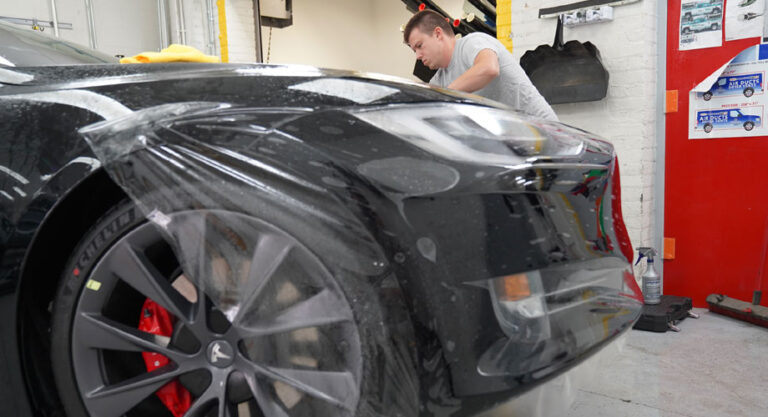
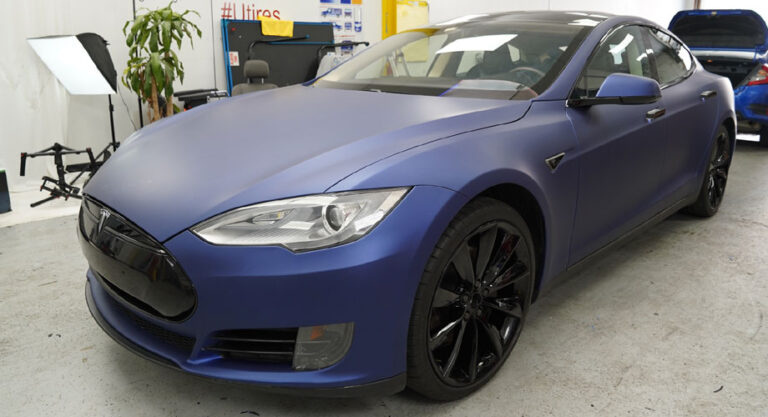














































































































Is It Worth Investing in New Car Protection?
A new car purchase is one of the most sizeable investments people make in their lifetime. So it is logical that owners try to preserve the pristine appearance of their vehicles for as long as possible. However, the daily wear and tear cannot be avoided. Consequently, new vehicles lose their immaculate shine and depreciate in value very quickly. Many car owners downplay the importance of paint protection, considering it an unnecessary extra rather than a workable solution. There’s a widespread misconception that a new vehicle must be regularly washed to safeguard its paintwork. But even a car that has just rolled out of the showroom needs protection from external elements that can potentially harm its flawless body paint. The modern market offers different car exterior solutions. What are these, and which of them are the most helpful for a new vehicle?

Elevate your new car drive with professional window tinting
The first thing to do is protect your new car’s windows. Usually, tinted windows are associated only with the vehicle’s aesthetic. However, this thin, transparent film provides numerous benefits. It offers increased privacy, reduces sunlight glare, protects against harmful UV rays, and enhances the overall vehicle’s appearance. Additionally, window tint can help regulate interior temperature, providing a more comfortable driving experience while safeguarding the car’s interior from sun damage.
Before you get your windows tinted, explore various options on the market. Darker tints offer better UV protection and privacy but may pose visibility challenges at night. On the other hand, lighter tints may compromise some privacy and UV shielding but ensure clearer visibility through your windows. It is also crucial to select a trustworthy installer that utilizes premium materials. Inferior tints may deteriorate rapidly, bubble and jeopardize your car’s appearance and potentially your visibility.
Protect your investment: new car paint protection options
Gone are the days when car owners could rely only on traditional wax. In the ever-evolving automotive care industry, the choices have greatly expanded: Carnuba waxes, polymer sealants, Teflon sealants, ceramic coatings, PPF and more. The question still remains – what to choose? Let’s discover more about the two most advanced categories: ceramic coating and paint protection film.
- Ceramic coating. It can be called a modern interpretation of traditional wax. The revolutionary formula uses quartz and silicon nanoparticles that form a solid connection with the paintwork when applied. They penetrate deep into the paint’s pores, filling them and creating a resilient shield for exterior protection. This synthetic material promises prolonged defense and a glossy finish to the paint job.
It effectively resists environmental hazards like acid rain, bird droppings, and tree sap. When expertly applied, this innovation transforms your car entirely. It creates a robust layer on the paint’s surface, preventing UV rays, insects, oxidation, and various environmental threats. The winning feature of nanoceramic coating is its hydrophobic nature. However, even this advanced solution needs to be regularly replaced to stay at its protective best. - PPF (Paint Protection Film). PPF, or a clear bra, is the ultimate protection of the car’s exterior. It is made from a thermoplastic urethane material known for its exceptional resistance to impact and abrasion. PPF serves as an imperceptible shield against the adversities of the road. This film is almost invisible, yet it forms a powerful barrier against stone chips, bug splatter, bird droppings, UV rays and other environmental perils. Applied seamlessly to the exterior, PPF provides unparalleled protection and contributes to the vehicle’s aesthetic appeal.
our latest news!
Leading PPF manufacturers incorporate a remarkable self-healing technology in their films. The film restores after minor scratches and scuffs, gradually smoothing them away. This protection is a must for vehicles that are engaged in much daily driving. Being a costly investment, PPF installation can be partial. It means you can find a solution for any budget, protecting only the most vulnerable parts of the vehicle.
The best approach to protect your new car’s paint job is to strategically combine PPF and ceramic coating. Experts meticulously install PPF, a thin protective film, to safeguard painted surfaces from flying rocks and minor scratches. Then, a ceramic coating is applied to contribute to chemical resistance and simplify the cleaning process thanks to its hydrophobic feature. Some PPF manufacturers have already combined these two solutions into one. Consider XPEL Ultimate Fusion PPF. It is a next-level dual-purpose protection. This film comes with a hydrophobic top coat, performing its protecting functions against minor damage and effectively repelling water.
Pros and cons of installing PPF on new cars
Paint Protection Film (PPF) is the most popular paint protection solution today. However, like any automotive enhancement product, PPF has its set of advantages and considerations.
Pros:
- Robust protection. PPF acts as an invisible shield, safeguarding your car’s paintwork from various threats during daily driving: stone chips, minor scratches and environmental contaminants.
- Self-healing technology. Many PPFs feature self-healing properties. Such films allow minor scratches and scuffs to vanish over time, returning to their flawless appearance.
- Preserves resale value. By preventing damage to the factory paint job, PPF helps retain the car’s resale value, making it an attractive investment for potential buyers.
- Corrosion protection. PPF provides chemical resistance: it protects the paint from harsh substances and simplifies the cleaning process.
- UV Protection. It shields the car from UV radiation and prevents paint from fading and oxidation over time.
Cons:
- Cost. Professional PPF installation can be relatively expensive, especially for full-body coverage, making it a considerable upfront investment.
- Installation complexity. Achieving a seamless and bubble-free installation requires skill and expertise, and mistakes during installation may affect the outcome and film’s effectiveness.
- Not impervious. While highly durable, PPF is not impervious to extreme damage. Severe impacts, such as a collision, may still cause damage to the underlying paint.
Protection at dealership vs. professional installation
When you are about to buy a new car from a dealership, your salesman will surely have an enticing offer – the option to have paint protection and window tint installed right there on the spot. It sounds super convenient, doesn’t it? They usually roll the cost into a general sum to make it feel less like a separate expense. While it seems a great deal initially, here is the twist.
- Limited options. Dealership choices might be restricted concerning PPF brands, types, or coverage options, limiting customization according to individual preferences.
- Poor installation. The quality of installation may vary, as dealership technicians do not specialize exclusively in PPF applications.
- Cost. While it may seem cheaper to get protection installation in one package, if you analyze it, you will often discover that you could get protective products of much better quality at the same price.
Summing up, the protection of new cars is an option. Paint Protection Film offers undeniable protection for new cars, but potential buyers should carefully weigh the advantages and disadvantages, considering factors such as budget, maintenance rules, and the desired level of protection. Learn these nuances before choosing a reputable installer and enjoying PPF’s long-lasting benefits.
At Tinting Chicago, we offer exterior detailing solutions for a variety of new car models and brands, such as Ford, Toyota, Chevrolet, Honda, Hyundai, Jeep, Nissan, Kia, Subaru, Ram, Tesla, GMC, Mercedes-Benz, BMW, Mazda, and others.
FAQ
Does a new car need paint protection?
PPF may seem like an unnecessary investment in a new car, but it will be fully paid off in the long run: a prolonged showroom look for your vehicle and preserved resale value.
What’s the purpose of car window tinting?
Window tinting is not only about a stylish, sleek look. Window tints reduce UV rays and heat from reaching the interior of the car. Besides, tinted windows create some privacy for the driver.
Is PPF recommended for a new car?
Paint Protection Film (PPF) is highly recommended for new cars, offering a durable shield against road debris, stone chips, and environmental elements, maintaining the vehicle’s aesthetic appeal.
What is better for a new car: ceramic or PPF?
Choosing between ceramic coating and PPF for a new car depends on your priorities – ceramic coating enhances overall shine and ease of cleaning, while PPF provides superior protection against physical damage from rocks and debris.



























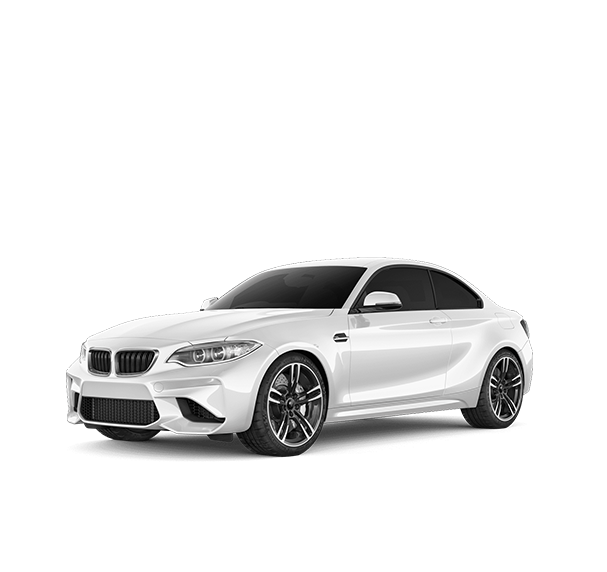
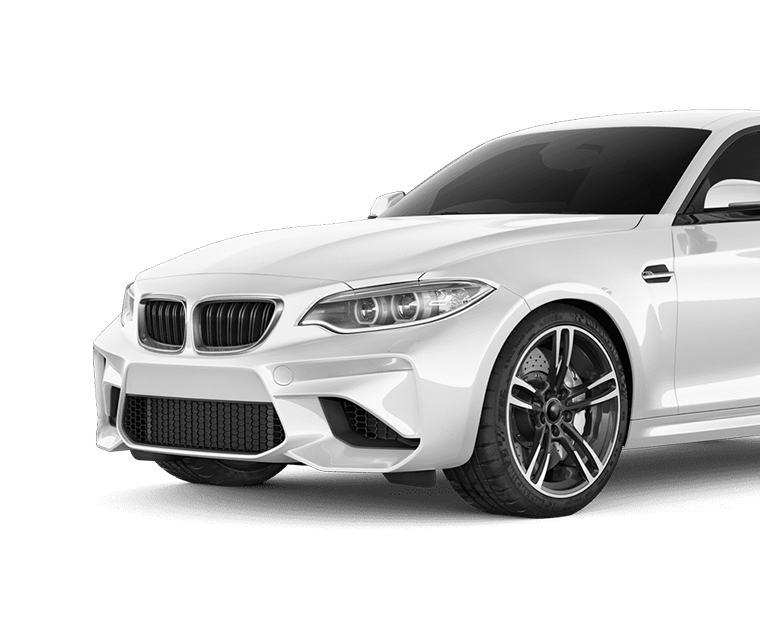
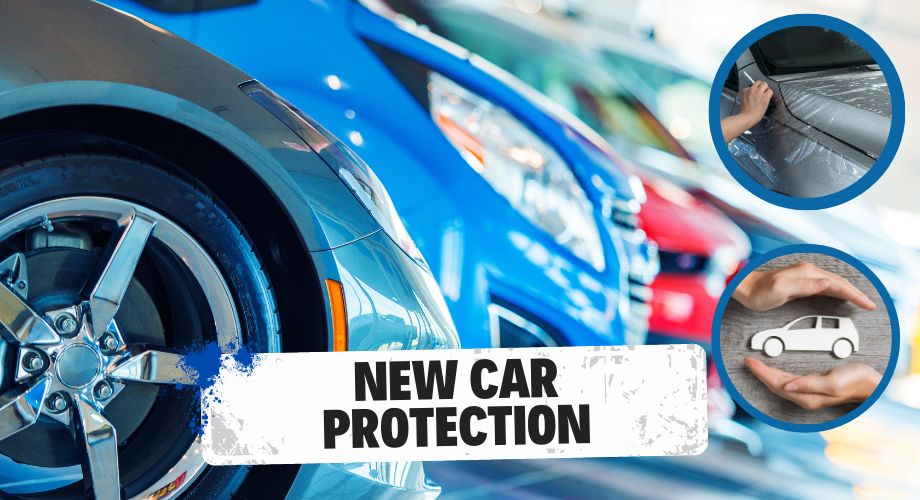


 Send a message
Send a message Send a message
Send a message